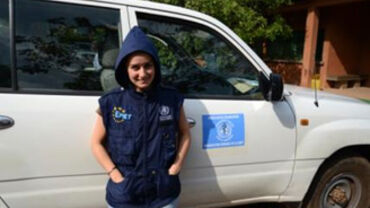Epidemiological update: Outbreak of Ebola Virus Disease in West Africa, 28 May 2014
An outbreak of Ebola Virus Disease (EVD) with onset in December 2013 is still evolving in Guinea and recently spread to Sierra Leone. The first cases were reported from Guéckédou prefecture, a forested region of south-eastern Guinea near the border with Liberia and Sierra Leone. The alert was sent to the Ministry of Health of Guinea on 10 March 2014.
Background
An outbreak of Ebola Virus Disease (EVD) with onset in December 2013 is still evolving in Guinea and recently spread to Sierra Leone. The first cases were reported from Guéckédou prefecture, a forested region of south-eastern Guinea near the border with Liberia and Sierra Leone. The alert was sent to the Ministry of Health of Guinea on 10 March 2014.
Current situation
Guinea. As of 23 May 2014 the Ministry of Health of Guinea has reported 8 new cases and 3 new deaths: from existing affected areas, Guéckédou (2 cases and 0 deaths) and Macenta (3 cases and 3 deaths) and from Télimélé, a newly affected district (3 cases 0 deaths). In total, 258 clinical cases of EVD, including 174 deaths, have been reported. The number of confirmed cases is 146, including 95 deaths. The cumulative number of clinical EVD cases and deaths since the beginning of the outbreak by location is: Conakry (50 cases, including 25 deaths), Guéckédou (170/121), Macenta (22/17), Kissidougou (8/6), Dabola (4/4) Djingaraye (1/1) and Télimélé (3/0). The number of patients currently hospitalized is 9 (6 in Guéckédou and 3 in Télimélé) and the number of contacts being actively followed-up is 173 (132 in Guéckédou and 41 in Télimélé).
Outbreaks in Kissidougou, Dabola and Djingaraye are considered over because two incubation periods (42 days) have passed since the isolation of last reported cases in Djingaraye.
Sierra Leone. According to WHO on 25 May the first laboratory-confirmed case of EVD and five community deaths were reported in Koindu chiefdom which shares border with Guéckédou in Guinea. Media quoting MoH reports that cases have travelled to funerals in Guinea. On 26 May PROmed quoting MoH reports 6 confirmed new cases from Kailahun district. National authorities of Sierra Leone and WHO activated Ebola task force and initiated preliminary response measures and development of funding proposals based on the existing national Ebola virus disease preparedness and response plan. A team of experts is about to be deployed to the field to conduct epidemiological investigations.
Liberia. As of 23 May 2014, the number of cases is 12 (6 confirmed, 2 probable and 4 suspected) and 11 deaths. The most recent confirmed or probable case was on 6 April 2014.
No cases have been detected among travellers to Europe.
Conclusions
This is the first time an EVD outbreak is reported in West Africa. Despite efforts to control the outbreak, the disease continues to spread with new cases in Guéckédou and Macenta and in new affected district of Télimélé in Guinea and Koindu and Kailahun districts in Sierra Leone where the first laboratory-confirmed case was reported. The new cases could result from “missed cases” or failure in contact follow-up of previous cases.
WHO and international organizations are supporting the Ministries of Health of Guinea, Sierra Leone and Liberia in their EVD prevention, contract tracing, health care and control related activities.
Prevention and control activities will be continued in order to stop the transmission of EVD. Isolation of cases, active monitoring of contacts and other control measures currently implemented in the affected countries with the support of medical humanitarian organisation such as Médecins Sans Frontières, EU scientists and an EU funded mobile laboratory in Guéckédou and WHO.The risk of infection for travellers visiting Guinea, Liberia and Sierra Leone is considered very low. Most human infections result from direct contact with bodily fluids or secretions from an infected human, and the highest risks of infection are associated with caring for infected patients, particularly in hospital settings, unsafe medical procedures, including exposure to contaminated medical devices, such as needles and syringes and unprotected exposure to contaminated bodily fluids.







